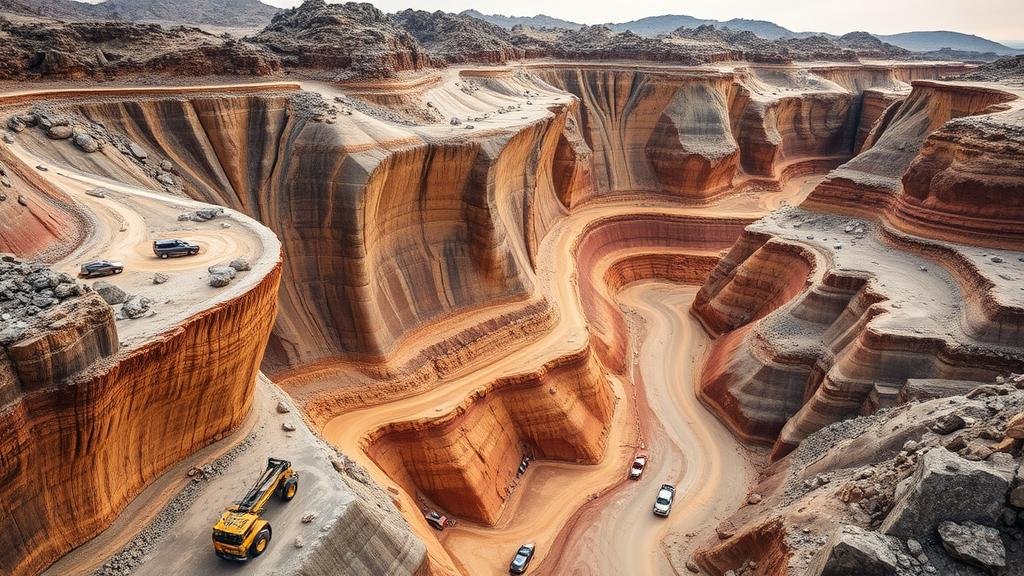How to Locate and Exploit Shear Zones in Hard Rock Mining
How to Locate and Exploit Shear Zones in Hard Rock Mining
Shear zones play a critical role in the geology of hard rock mining, serving as conduits for mineralization and influencing the structural integrity of rock formations. Understanding how to locate and exploit these zones is essential for optimizing mining operations and enhancing resource recovery.
Understanding Shear Zones
Shear zones are areas within rock formations where intense deformation has occurred, typically due to tectonic forces. These zones can create pathways for fluids, leading to mineralization. Geologically, shear zones are characterized by foliation, fracturing, and the presence of various mineral assemblages.
- They often host valuable minerals, such as gold, silver, and copper.
- They can be identified by changes in rock texture, such as increased schistosity or the presence of mylonites.
Methods for Locating Shear Zones
The first step in exploiting shear zones is accurate location. Several methods can be employed for this purpose:
- Geological Mapping: Detailed mapping of surface geology can reveal clues about the presence of shear zones.
- Geophysical Surveys: Techniques such as resistivity, magnetic, and seismic surveys can help detect anomalies associated with shear zones beneath the surface.
- Drilling: Core drilling provides direct evidence of shear zones and their associated mineralization.
- Remote Sensing: Satellite imagery and aerial photography can identify structural features indicative of shear zones.
Case Study: The Goldstrike Mine
The Goldstrike Mine in Nevada is an excellent example of successful shear zone exploitation. Here, the discovery of a prominent shear zone led to the significant recovery of gold deposits. mining company utilized a combination of geological mapping and geophysical surveys to identify the shear zone, followed by targeted drilling that intersected high-grade ore zones.
Exploiting Shear Zones
Once identified, the next logical step is exploitation. Effective extraction from shear zones involves several best practices:
- Selective Mining: Focus on areas with the highest concentration of valuable minerals within the shear zone to maximize recovery rates.
- Support Design: Due to the inherent instability of shear zones, careful engineering and support systems must be designed to prevent collapses and ensure worker safety.
- Adaptive Mining Techniques: Utilizing advanced mining methods such as sublevel stoping or cut and fill can accommodate the unique challenges posed by shear zones.
Best Practices for Evaluating Shear Zone Potential
Before proceeding with mining operations, a comprehensive assessment of the shear zones potential is vital. This can be achieved through:
- Geochemical Sampling: Analyzing rock samples for mineral content and assessing the economic viability of the shear zone.
- Hydrological Studies: Understanding water flow within the shear zone is essential to manage potential flooding and optimize recovery methods.
- Monitoring Geological Stability: Continuous monitoring of geological conditions helps manage risks associated with unpredictable rock behavior.
Potential Challenges and Considerations
Exploiting shear zones is not without challenges. Among the primary concerns are:
- Structural Instability: Shear zones can be prone to movement, posing a threat to mining operations.
- Resource Variability: The uneven distribution of minerals within shear zones means that not all areas may be economically viable.
- Environmental Impacts: Mining operations can affect surrounding ecosystems, thus proper environmental assessments must be integrated.
Actionable Takeaways
Locating and exploiting shear zones in hard rock mining necessitates a multifaceted approach. To optimize mining efforts, companies should:
- Invest in advanced exploration techniques, including both geological and geophysical methods.
- Emphasize safety through engineering support and adaptive mining techniques.
- Conduct regular assessments of geological and environmental conditions to mitigate risks.
By understanding the complexities of shear zones and employing due diligence in exploration and extraction, mining operations can achieve greater efficiency and resource recovery.



